بحوث عن تخصيب اليورانيوم باللغة الإنجليزية والعربية

Uranium Enrichment
The uranium enriched in uranium-235 (U235) is required in commercial light-water reactors to produce a controlled nuclear reaction. Several different processes may be used to enrich uranium, as described on this page:
Enriching Uranium
Gaseous Diffusion
Gas Centrifuge
Laser Separation
For additional information, see the Related Information (below) or the Fact Sheet on Uranium Enrichment.
Enriching Uranium
Enriching uranium increases the proportion of uranium atoms that can be "split" by fission to release energy (usually in the form of heat) that can be used to produce electricity. Not all uranium atoms are the same. When uranium is mined, it consists of about 99.3% uranium-238 or U-238 (U238), 0.7% uranium-235 or U-235 (U235), and < 0.01% uranium-234 or U-234 (U234). These are the different isotopes of uranium, which means that while they all contain 92 protons in the atom’s center, or nucleus (which is what makes it uranium), the U238 atoms contain 146 neutrons, the U235 atoms contain 143 neutrons, and the U234 atoms contain only 142 neutrons. (The total number of protons plus neutrons gives the atomic mass of each isotope — that is, 238, 235, or 234, respectively.)
The fuel for nuclear reactors has to have a higher concentration of U235 than exists in natural uranium ore. This is because U235 is "fissionable," meaning that it starts a nuclear reaction and keeps it going. Normally, the amount of the U235 isotope is enriched from 0.7% of the uranium mass to about 5%, as illustrated in this diagram of the enrichment process.
Gaseous diffusion is the only process currently being used in the United States to commercially enrich uranium. Gas centrifuges and laser separation can also be used to enrich uranium, as described below.

Gaseous Diffusion
The gaseous diffusion process uses molecular diffusion to separate a gas from a two-gas mixture. The isotopic separation is accomplished by diffusing uranium [which has been combined with fluorine to form uranium hexafluoride (UF6) gas] through a porous membrane (barrier), and using the different molecular velocities of the two isotopes to achieve separation.
Process: In the gaseous diffusion enrichment plant, uranium hexafluoride (UF6) gas is slowly fed into the plant’s pipelines where it is pumped through special filters called barriers or porous membranes. The holes in the barriers are so small that there is barely enough room for the UF6 gas molecules to pass through. The isotope enrichment occurs when the lighter UF6 gas molecules (with the U234 and U235 atoms) tend to diffuse faster through the barriers than the heavier UF6 gas molecules containing U238. One barrier isn’t enough, though. It takes many hundreds of barriers, one after the other, before the UF6 gas contains enough U235 to be used in reactors. At the end of the process, the enriched UF6 gas is withdrawn from the pipelines and condensed back into a liquid that is poured into containers. The UF6 is then allowed to cool and solidify before it is transported to fuel fabrication facilities where it is turned into fuel assemblies for nuclear power plants. The diagram to the right illustrates this gaseous diffusion enrichment process.
Hazards: The primary hazard in gaseous diffusion plants include the chemical and radiological hazard of a UF6 release and the potential for mishandling the enriched uranium, which could create a criticality accident (inadvertent nuclear chain reaction).
Plants: The only gaseous diffusion plant in operation in the United States is in Paducah, Kentucky. A similar plant is located near in Piketon, Ohio, but it was shut down in March 2001. Both plants are leased to the United States Enrichment Corporation (USEC) from the U.S. Department of Energy and have been regulated by the NRC since March 4, 1997.

The gas centrifuge process uses a large number of rotating cylinders in series and parallel configurations. Gas is introduced and rotated at high speed, concentrating the component of higher molecular weight toward the outer wall of the cylinder and the lower molecular weight component toward the center. The enriched and the depleted gases are removed by scoops.
Gas Centrifuge
The gas centrifuge uranium enrichment process uses a large number of rotating cylinders in series and parallel formations. Centrifuge machines are interconnected to form trains and cascades. In this process, UF6 gas is placed in a cylinder and rotated at a high speed. This rotation creates a strong centrifugal force so that the heavier gas molecules (containing U238) move toward the outside of the cylinder and the lighter gas molecules (containing U235) collect closer to the center. The stream that is slightly enriched in U235 is withdrawn and fed into the next higher stage, while the slightly depleted stream is recycled back into the next lower stage. Significantly more U235 enrichment can be obtained from a single-unit gas centrifuge than from a single-unit gaseous diffusion stage. The diagram to the right illustrates this gas centrifuge enrichment process.
No gas centrifuge commercial production plants are currently operating in the United States. However, both Louisiana Energy Services (LES) and USEC Inc. have recently received licenses to construct and operate commercial enrichment facilities. USEC Inc. was granted a license in February 2004 for a demonstration and test gas centrifuge plant, which is currently under construction. Both of these commercial facilities are now under construction. In addition, on December 30, 2008, AREVA Enrichment Services, LLC (a subsidiary of AREVA NC, Inc.), submitted an application to the NRC, seeking a license to construct and operate a gas centrifuge facility in Bonneville County, Idaho. This proposed plant is known as the Eagle Rock Enrichment Facility.

Laser Separation
Isotopic separation of uranium can be achieved based on photoexcitation principles (exciting the molecules using laser light). Such technologies have been named Atomic Vapor Laser Isotope Separation (AVLIS), Molecular Laser Isotope Separation (MLIS), and Separation of Isotopes by Laser Excitation (SILEX). In general, the enrichment process entails using three major systems, which are the laser systems, optical systems, and separation module system. Tunable lasers can be developed to deliver a highly monochromatic radiation (light of a single-color). The radiation from these lasers can photoionize a specific isotopic species while not affecting other isotopic species. The affected species is then physically or chemically changed, which enables the material to be separated. AVLIS used a uranium-iron (U-Fe) metal alloy as its feed material, while SILEX and MLIS use UF6 as its feed material.
No laser separation uranium enrichment plants are currently operating in the United States. However, in July 2007, General Electric - Hitachi submitted a license amendment request to the NRC, seeking approval for research and development associated with laser enrichment to be conducted at its Global Nuclear Fuels-Americas, LLC, facility in Wilmington, NC. The NRC approved the amendment on May 12, 2008, and GE-Hitachi is currently constructing the test loop with the intention of beginning operations in the near future. In addition, in June 2009, GE-Hitachi submitted a license application to construct a commercial laser enrichment plant in Wilmington, NC. The NRC staff is currently reviewing that application.
The fuel of a nuclear power plant is uranium, but only a certain type of uranium atom can be easily split to produce energy. This type of uranium atom – called uranium-235 (U235) – comprises less than 1 percent by weight of the uranium as it is mined or milled. To make fuel for reactors, the natural uranium is enriched to increase the concentration of U235 to 3 percent to 5 percent.
The uranium fuel cycle begins by mining and milling uranium ore to produce U3O8, also known as "yellow cake," which is then converted into uranium hexafluoride (UF6). The UF6 is then enriched before being made into nuclear fuel. Throughout the global nuclear industry, uranium is enriched by one of two methods: gaseous diffusion or gas centrifuge. A third method – laser enrichment – has been proposed for use in the United States.
Gaseous Diffusion
Gaseous diffusion is based on the separation effect arising from molecular effusion (i.e., the flow of gas through small holes). In a vessel containing a mixture of two gases, molecules of the gas with lower molecular weight (U235 as opposed to the heavier and more plentiful U238) travel faster and strike the walls of the vessel more frequently, relative to their concentration, than do molecules with higher molecular weight. Because the walls of the vessel are semi-permeable, more of the lighter molecules flow through the wall than the heavier molecules. As such, gas that passes through the walls of the vessel is slightly enriched in the lighter isotope.
Currently, the United States uses the gaseous diffusion process to enrich uranium. There are two gaseous diffusion plants in the United States, at the Department of Energy’s Portsmouth Site near Piketon, Ohio, and DOE’s Paducah, Ky, site. Both are operated by the United States Enrichment Corporation (USEC), which was created as a government corporation under the Energy Act of 1992 and privatized by legislation in 1996. The Ohio plant ceased enrichment operations in 2001.
Gas Centrifuge
The gas centrifuge process has been widely used in Europe for about 30 years to enrich uranium for the commercial nuclear power market. The process uses a large number of rotating cylinders interconnected to form cascades. The UF6 gas is placed in the cylinder, which is then rotated at a high speed. The rotation creates a strong centrifugal force that draws more of the heavier gas molecules (containing the U238) toward the wall of the cylinder, while the lighter gas molecules (containing the U235) tend to collect closer to the center. The stream that is slightly enriched in U235 is withdrawn and fed into the next higher stage, while the slightly depleted stream is recycled back into the next lower stage. Significantly more U235 enrichment can be obtained from a single gas centrifuge cascade than from a single gaseous diffusion stage.
Two gas centrifuge enrichment plants are currently under construction in the United States. The NRC issued a license in 2004 to USEC to construct a test and demonstration facility known as the Lead Cascade at the Piketon, Ohio, site, and a separate license in 2007 to construct and operate the full-scale American Centrifuge Plant. In June 2006, the NRC issued a license to Louisiana Energy Services (LES) to construct and operate the National Enrichment Facility in Lea County, N.M.
A third gas centrifuge plant is planned. In December 2008, Areva Enrichment Services LLC (AES) submitted an application to NRC for a license to construct and operate the Eagle Rock Enrichment Facility in Bonneville County, Idaho. This application is under review.
Laser Enrichment
The U235 isotope can be separated from uranium through “photoexcitation” by using specially tuned lasers. The lasers are able to ionize a specific isotope, changing its properties and allowing it to be separated from the rest of the uranium. One laser enrichment method, called Atomic Vapor Laser Isotope Separation, or AVLIS, was developed by the U.S. Department of Energy in the 1980s and 1990s but was never used commercially. An Australian technology called SILEX, for Separation of Isotopes by Laser Excitation, is being developed by General Electric in partnership with Hitachi for potential use in the United States.
Laser enrichment has the potential to consume less power, create less waste, and is more efficient than gaseous diffusion and gas centrifuge enrichment.
In January 2009, GE-Hitachi Global Laser Enrichment LLC (GLE) submitted an Environmental Report for a laser-based enrichment plant to be located in Wilmington, N.C. GLE expects to complete a license application for the plant by the end of June 2009.
NRC Responsibilities
The NRC licenses and inspects all commercial nuclear fuel facilities involved in the processing and fabrication of uranium ore into reactor fuel, including facilities that enrich uranium. The agency currently has two full-time resident inspectors at USECs enrichment plant in Kentucky, and specialized inspections are conducted using personnel from NRC headquarters in Maryland and the Region II office in Atlanta, which has oversight of fuel cycle facilities. The NRC also reports to Congress on the status of USECs gaseous diffusion plants whenever the agency renews the companys certificate of compliance. The current certificates will expire on December 31, 2013, unless USEC has submitted an acceptable renewal application before that date. The next report to Congress will be issued following the renewal decision at that time.
Under the Atomic Energy Act, as amended, NRC must license a uranium enrichment plant under 10 CFR Parts 40 (source material) and 70 (special nuclear material). Before an applicant can begin construction of a plant, NRC must issue a license for construction and operation. To issue a license, the NRC must prepare an Environmental Impact Statement (EIS) and a Safety Evaluation Report for the project. NRC must also conduct a formal hearing before issuing a license, and members of the public may request status as intervenors in order to raise important safety or environmental issues about the proposed plant.
If the application is for a commercial production facility, the NRC will conduct a "scoping" meeting to get public input into the types of issues to be addressed in the environmental review. Following the scoping process, NRC will prepare a draft EIS to assess the proposed facilitys potential impact on public health and safety and the environment, including land, air and water resources, and offer a formal opportunity for the public to comment on it. The EIS process typically takes 18 months.
Although the license is for construction and operation, no enrichment plant can begin operating until the NRC verifies through rigorous inspections that the facility has been constructed as required by the license. Throughout construction, NRC inspections will verify that the design, construction, installation and tests of safety significant features, equipment and components comply with the license and NRC regulations. Facility policies, programs and management procedures will also be reviewed.
As construction nears completion, the NRC will conduct pre-operational readiness review inspections of the facility’s most safety-significant features, including but not limited to chemical safety, fire protection, radiological control procedures, emergency preparedness, training and qualification of facility personnel and criticality safety. The NRC will not authorize any licensee to introduce UF6 into a facility until the NRC has determined, based on these inspection results, that the licensee can do so safely.
FACT SHEET
Office of Public Affairs
Phone: 301-415-8200
Email: opa.resource@nrc.gov
Uranium Enrichment
The fuel of a nuclear power plant is uranium, but only a certain type of uranium atom can be easily split
to produce energy. This type of uranium atom – called uranium-235 (U235) – comprises less than 1
percent by weight of the uranium as it is mined or milled. To make fuel for reactors, the natural
uranium is enriched to increase the concentration of U235 to 3 percent to 5 percent.
The uranium fuel cycle begins by mining and milling uranium ore to produce U3O8, also known as
"yellow cake," which is then converted into uranium hexafluoride (UF6). The UF6 is then enriched
before being made into nuclear fuel. Throughout the global nuclear industry, uranium is enriched by
one of two methods: gaseous diffusion or gas centrifuge. A third method – laser enrichment – has been
proposed for use in the United States.
Gaseous Diffusion
Gaseous diffusion is based on the separation effect
arising from molecular effusion (i.e., the flow of
gas through small holes). In a vessel containing a
mixture of two gases, molecules of the gas with
lower molecular weight (U235 as opposed to the
heavier and more plentiful U238) travel faster and
strike the walls of the vessel more frequently,
relative to their concentration, than do molecules
with higher molecular weight. Because the walls of the vessel are semi-permeable, more of the lighter
molecules flow through the wall than the heavier molecules. As such, gas that passes through the walls
of the vessel is slightly enriched in the lighter isotope.
2
Currently, the United States uses the gaseous diffusion process to enrich uranium. There are two
gaseous diffusion plants in the United States, at the Department of Energy’s Portsmouth Site near
Piketon, Ohio, and DOE’s Paducah, Ky, site. Both are operated by the United States Enrichment
Corporation (USEC), which was created as a government corporation under the Energy Act of 1992
and privatized by legislation in 1996. The Ohio plant ceased enrichment operations in 2001.
Gas Centrifuge
The gas centrifuge process has been widely used in Europe for
about 30 years to enrich uranium for the commercial nuclear
power market. The process uses a large number of rotating
cylinders interconnected to form cascades. The UF6 gas is placed
in the cylinder, which is then rotated at a high speed. The rotation
creates a strong centrifugal force that draws more of the heavier
gas molecules (containing the U238) toward the wall of the
cylinder, while the lighter gas molecules (containing the U235)
tend to collect closer to the center. The stream that is slightly
enriched in U235 is withdrawn and fed into the next higher stage,
while the slightly depleted stream is recycled back into the next
lower stage. Significantly more U235 enrichment can be obtained
from a single gas centrifuge cascade than from a single gaseous
diffusion stage.
Two gas centrifuge enrichment plants are currently under
construction in the United States. The NRC issued a license in
2004 to USEC to construct a test and demonstration facility
known as the Lead Cascade at the Piketon, Ohio, site, and a
separate license in 2007 to construct and operate the full-scale
American Centrifuge Plant. In June 2006, the NRC issued a
license to Louisiana Energy Services (LES) to construct and operate the National Enrichment Facility
in Lea County, N.M.
A third gas centrifuge plant is planned. In December 2008, Areva Enrichment Services LLC (AES)
submitted an application to NRC for a license to construct and operate the Eagle Rock Enrichment
Facility in Bonneville County, Idaho. This application is under review.
Laser Enrichment
The U235 isotope can be separated from uranium through “photoexcitation” by using specially tuned
lasers. The lasers are able to ionize a specific isotope, changing its properties and allowing it to be
separated from the rest of the uranium. One laser enrichment method, called Atomic Vapor Laser
Isotope Separation, or AVLIS, was developed by the U.S. Department of Energy in the 1980s and
1990s but was never used commercially. An Australian technology called SILEX, for Separation of
Isotopes by Laser Excitation, is being developed by General Electric in partnership with Hitachi for
potential use in the United States.
Laser enrichment has the potential to consume less power, create less waste, and is more efficient than
gaseous diffusion and gas centrifuge enrichment.
3
In January 2009, GE-Hitachi Global Laser Enrichment LLC (GLE) submitted an Environmental
Report for a laser-based enrichment plant to be located in Wilmington, N.C. GLE expects to complete
a license application for the plant by the end of June 2009.
NRC Responsibilities
The NRC licenses and inspects all commercial nuclear fuel facilities involved in the processing and
fabrication of uranium ore into reactor fuel, including facilities that enrich uranium. The agency
currently has two full-time resident inspectors at USECs enrichment plant in Kentucky, and
specialized inspections are conducted using personnel from NRC headquarters in Maryland and the
Region II office in Atlanta, which has oversight of fuel cycle facilities. The NRC also reports to
Congress on the status of USECs gaseous diffusion plants whenever the agency renews the companys
certificate of compliance. The current certificates will expire on December 31, 2013, unless USEC has
submitted an acceptable renewal application before that date. The next report to Congress will be
issued following the renewal decision at that time.
Under the Atomic Energy Act, as amended, NRC must license a uranium enrichment plant under 10
CFR Parts 40 (source material) and 70 (special nuclear material). Before an applicant can begin
construction of a plant, NRC must issue a license for construction and operation. To issue a license, the
NRC must prepare an Environmental Impact Statement (EIS) and a Safety Evaluation Report for the
project. NRC must also conduct a formal hearing before issuing a license, and members of the public
may request status as intervenors in order to raise important safety or environmental issues about the
proposed plant.
If the application is for a commercial production facility, the NRC will conduct a "scoping" meeting to
get public input into the types of issues to be addressed in the environmental review. Following the
scoping process, NRC will prepare a draft EIS to assess the proposed facilitys potential impact on
public health and safety and the environment, including land, air and water resources, and offer a
formal opportunity for the public to comment on it. The EIS process typically takes 18 months.
Although the license is for construction and operation, no enrichment plant can begin operating until
the NRC verifies through rigorous inspections that the facility has been constructed as required by the
license. Throughout construction, NRC inspections will verify that the design, construction,
installation and tests of safety significant features, equipment and components comply with the license
and NRC regulations. Facility policies, programs and management procedures will also be reviewed.
As construction nears completion, the NRC will conduct pre-operational readiness review inspections
of the facility’s most safety-significant features, including but not limited to chemical safety, fire
protection, radiological control procedures, emergency preparedness, training and qualification of
facility personnel and criticality safety. The NRC will not authorize any licensee to introduce UF6 into
a facility until the NRC has determined, based on these inspection results, that the licensee can do so
safely.
May 2009
عباره عن عزل نظائر كيميائيه محدده من عنصر ما لغرض زيادة تركيز نظائر اخرى للحصول على مادة تعتبر مشبعة بالنظير المطلوب على سبيل المثال عزل نظائر معينة من اليورانيوم الطبيعي للحصول على اليورانيوم المخصب و اليورانيوم المنضب . وتتم عملية التخصيب على مراحل حيث يتم في كل مرحلة عزل كميات أكبر من النظائر الغير مرغوبة حيث يزداد العنصر تخصيبا بعد كل مرحلة لحد الوصول إلى نسبة النقاء المطلوبة.
على سبيل المثال اليورانيوم المخصب عبارة عن يورانيوم تمت زيادة نسبة نظائر اليورانيوم-235 فيه وازالة النظائر الأخرى. وعملية التخصيب هذه صعبة و مكلفة وتكمن الصعوبة ان النظائر الذي يراد ازالتها من اليورانيوم شبيهة جدا من ناحية الوزن للنظائر الذي يرغب بالابقاء عليها و تخصيبها ويتم عملية التخصيب باستخدام الحرارة عبر سائل او غاز لتساهم في عملية عزل النظائر الغير المرغوبة وهناك طرق اخرى أكثر تعقيدا كاستعمال الليزر أو الأشعة الكهرومغناطيسية. (الليزر (بالإنجليزية: LASER وهي اختصار لعبارة Light Amplification by Stimulated Emission of Radiation وتعني تضخيم الضوء بإنبعاث الإشعاع المحفز) عبارة عن حزمة ضوئية ذات فوتونات تشترك في ترددها وتتطابق موجاتها بحيث تحدث ظاهرة التداخل البناء بين موجاتها لتتحول إلى نبضة ضوئية ذات طاقة عالية. ويمكن تشبيه نبضة شعاع الليزر بالكتيبة العسكرية حيث يتقدم جميع العسكر بخطوات متوافقة منتظمة، بينما يشع المصدر الضوئي العادي موجات ضوئية مبعثرة غير منتظمة فلا يكون لها قوة الليزر. وباستخدام بلورات لمواد مناسبة(مثل الياقوت الأحمر) عالية النقاوة يمكن تحفيز إنتاجها لأشعة ضوئية من لون واحد أي ذو طول موجة واحدة وكذلك في طور موجي واحد، وعند تطابقها مع بعضها وانعكاسها عدة مرات بين مرآتين داخل بلورة الليزر (تصبح كالعسكر في الكتيبة)، فتنتظم الموجات وتتداخل وتخرج من الجهاز بالطاقة الكبيرة المرغوب فيها.)
الكهرومغناطيسية (Electromagnetism) هي فيزياء المجال المغناطيسي (ويسمى أيضا حقل مغناطيسي) ،حيث يؤثر ذلك المجال على الشحنة الكهربية أو الجسيم المشحون كهربيا (والمقصود بالجسيم يختلف من آن لآخر ففى الكهرومغناطيسية الكلاسيكية يكون المقصود بالجسيم هو الجسيم النقطى اما في الكهرومغناطيسية الكمية يكون المقصد هو الجسيم الأولى), وفى المقابل يتأثر الحقل بوجود تلك الجسيمات وحركتها في المجال.
الحقل المغناطيسي المتغير يخلق مجالا كهربيا (وهذه الظاهرة تسمى بالحث الكهرومغناطيسي وهي أساس عمل المولدات الكهربائية والمحركات الكهربية والمحول الكهربي), وبالمثل يخلق حقل كهربي متغير حقلا مغناطيسيا ؛ وبسبب هذه التبادلية ما بين الحقلين الكهربي والمغناطيسي يصبح من الطبيعى أن نعتبرهم وجهان لعملة واحدة ألا وهي المجال الكهرومغناطيسي.
ينشئ المجال المغناطيسي نتيجة لحركة الشحنات الكهربية (كمثال:التيار الكهربائي)، ويسبب المجال المغناطيسي في وجود تلك القوي المغناطيسية المصاحبة للمغناطيس.
ما هو اليورانيوم؟
اليورانيوم فلز مشع أبيض فضي اللون، رمزه الكيميائي U. وهو مصدر الطاقة المستخدمة في توليد الطاقة الكهربائية في كل محطات القدرة النووية التجارية الكبيرة. فبإمكان قطعة من اليورانيوم في حجم كرة المضرب إطلاق كمية من الطاقة تساوي كمية الطاقة التي تطلقها حمولة من الفحم الحجري يبلغ وزنها ثلاثة ملايين ضعف وزن قطعة اليورانيوم. وينتج اليورانيوم أيضًا الانفجاريات الهائلة لبعض الأسلحة النووية
ما هو النظير؟
هناك رقمين مميزين لكل ذرة الرقم الأول يكتب أسفل يمين رمز الذرة وهو العدد الذري (عدد البروتونات أو الإلكترونات) والثاني يكتب أعلى يمين رمز الذرة ويُسمى الوزن الذري وهو مجموع عدد البروتونات والنيوترونات في الذرة، يحدد العدد الذري نوع عنصر الذرة مثلا: الذهب لديه رمز ذري (عدد إلكترونات = 97) واليورانيوم = 92 ... وهذا الرقم إذا تغير يعني أن العنصر تغير أي أن اليورانيوم إذا أزلنا منه إلكترونا واحدا فسيصبح عنصرا آخر (مادة أخرى). أما وزن الذري فإذا تغير فإن العنصر لا يتغير حيث يبقى هو نفسه اليورانيوم لكن بعض خصائصه تتغير وعدة ذرات تحمل نفس العدد الذري ولديها وزن ذري مختلف تسمى النظائر.
يتكون اليورانيوم من ثلاثة نظائر هي:
- اليورانيوم 238 بنسبة 99.28
- اليورانيوم 235 بنسبة 0.71
- اليورانيوم 234 بالنسبة الباقية.
وعملية التخصيب بشكل مبسط هي: زيادة نسبة النظير 235 في اليورانيوم لكي تصل إلى نسبة معينة حتى يتم استخدام اليورانيوم. وكمثال فإنه إذا زدنا نسبة النظير 235 إلى ما بين 3 بالمئة و5 بالمئة فإنه يُمكننا تشغيل مفاعل نووي لإنتاج الطاقة، بينما إذا زدناها إلى ما بين 20 بالمئة و90 بالمئة فإنه يُمكننا صناعة سلاح نووي.
يتم قذف اليورانيوم بالنيوترونات داخل مفاعل نووي معتمد على استخدام الماء، الأمر الذي يولد طاقة هائلة. ولكن هناك مشكلة بسيطة تعترض حدوث هذا بالبساطة التي يبدو عليها وهو أن اليورانيوم يحتوي على النظير 238 بنسبة 99.3 وهذا النظير غير قابل للانشطار على عكس اليورانيوم 235 القابل للانشطار، وبالتالي يجب أن يتم زيادة النظير 235 إلى حد معين في اليورانيوم الطبيعي لكي يتم شطره، وتوليد الطاقة الهائلة التي تختزنها ذرات اليورانيوم، ونشير مجدد إلى أن عملية زيادة نسبة اليورانيوم 235 في اليورانيوم الطبيعي هي ما يُطلق عليه مصطلح "تخصيب اليورانيوم".
عملية التخصيب اليورانيوم؟
اليورانيوم238 أثقل من اليورانيوم235 بنسبة بسيطة تبلغ 0.85%، وهذا الفرق البسيط في الكتلة هو الذي يستخدم لفصل النظيرين عن بعضهما. وتتعدد طرق الفصل بينهما ولكن طريقة الفصل بالطرد المركزي هي الأكثر انتشارا وذلك لكلفته القليلة مقارنة بغيرها من الطرق، وأساسا ليس هناك سوى ثلاثة طرق لتخصيب اليورانيوم:
○ الطرد المركزي
تستخدم هذه الطريقة في عدد من المحطات في أوروبا واليابان، وفي هذه الطريقة يأخذ التخصيب بالطرد المركزي عدة خطوات، أولها يحّول خلالها اليورانيوم الطبيعي إلى غاز في شكل "اليورانيوم سداسي الفلور"؛ ولأن فرق الكتلة بين جزيئات غاز النظيرين بسيط، يتم تخصيب اليورانيوم في خطوات متتالية، في كل خطوة يتم زيادة نسبة اليورانيوم235 حتى الوصول للنسبة المطلوبة.
يتكون جهاز الطرد المركزي في هذه الطريقة من أسطوانات عمودية ذات حركة دوامية سريعة. ويضخ غاز سادس فلوريد اليورانيوم في كل أسطوانة عبر أنبوبة عمودية ثابتة داخل كل أسطوانة. وتجبر الحركة الدوّامية للأسطوانة كل الغاز الخارجي تقريبًا في اتجاه الجدران المنحنية. وبالإضافة إلى ذلك، تساعد مغرفة متصلة بقاعدة الأنبوبة الثابتة في انسياب الغاز عموديًا، كما تساهم الفروق في درجات الحرارة داخل الأسطوانة في إحداث هذا الانسياب العمودي.
بسبب هذه التأثيرات ـ الحركة الدوّامية للأسطوانة وحركة المغرفة وفروق درجات الحرارة ـ ينساب الغاز بنمط معقد، ويصبح الغاز القريب من قاعدة الأسطوانة مركزًا باليورانيوم 238 أكثر من الغاز العلوي. وتزيل المغرفة السفلية النفايات الغازية، التي تحتوي على تركيزات أعلى نسبيًا من اليورانيوم 238، بينما تزيل المغرفة العلوية الغاز المخصب الذي يحتوي على اليورانيوم 235 بتركيز أعلى. وتتكرر العملية حتى يتم الحصول على التركيز المطلوب من اليورانيوم 235.
○ الانتشار الغازي
طريقة الانتشار الغازي. تستخدم هذه الطريقة في الولايات المتحدة. وفي هذه الطريقة تضخ جزيئات سادس فلوريد اليورانيوم خلال حواجز تحتوي على ملايين الثقوب الدقيقة.
تمر جزيئات الغاز الخفيفة عبر ثقوب الحواجز أسرع من الجزيئات الثقيلة. وتحتوي الجزيئات الخفيفة على ذرات اليورانيوم 235، ولذلك يحتوي الغاز الذي يمر عبر الحاجز على نسبة من اليورانيوم 235 أعلى من الغاز الأصلي. ونظرًا لأن هذه الزيادة طفيفة جدًا فإن الغاز يجب أن يمر عبر الحاجز عدة آلاف مرة لإنتاج اليورانيوم المخصب الذي يراد استخدامه في محطات القدرة النووية.
○ الفصل بالليزر
هذه الطريقة مازلت في الطور التجريب والاختبار، وفيها تُستخدم توليفة من ضوء الليزر وشحنة كهربائية لفصل نظائر اليورانيوم. والليزر نبطية تنتج حزمة رفيعة من الضوء ذات مدى ترددي ضيق جدًا (تردد الضوء هو معدل اهتزاز موجات الضوء).
طريقة فصل النظائر بالليزر تسمى طريقة البخار الذري تسخِّن حزمة من الإلكترونات قطعة من اليورانيوم عند قاعدة حاوية مغلقة، محولة اليورانيوم إلى بخار (غاز)، ثم يُخترق الغاز بنبضات من حزمة ليزرية. ويوالف تردد الحزمة بحيث تستطيع الإلكترونات في ذرات اليورانيوم 235 امتصاص الضوء، ولا تستطيع إلكترونات ذرات اليورانيوم 238 ذلك.
عندما يمتص إلكترون اليورانيوم 235 هذا الضوء يحصل على طاقة تكفيه لترك الذرة. وتغير هذه العملية التوازن الكهربائي للذرة. فالإلكترون يحمل شحنة كهربائية سالبة، بينما تحمل النواة شحنة كهربائية موجبة واحدة أو أكثر. وفي الذرة العادية يكون عدد الشحنات الموجبة مساويًا لعدد الشحنات السالبة. ولذلك تكتسب الذرة شحنة موجبة عندما يتركها إلكترون. ويقول العلماء عن هذه الحالة إن الذرة تحولت إلى أيون موجب. وهكذا يؤيِّن ضوء الليزر ذرات اليورانيوم 235، ولا يؤيِّن ذرات اليورانيوم 238.
عند صعود البخار الساخن إلى أعلى تجذب ألواح تجميع سالبة الشحنة في قمة الحاوية أيونات اليورانيوم 235 الموجبة. ولأن ألواح التجميع أبرد من الغاز فإن اليورانيوم 235 يتكثف عليه (يتحول من غاز إلى سائل). ويتقطر اليورانيوم 235 من ألواح التجميع إلى حاويات خاصة، مكونًا كتلة صلبة. ثم تجمع الكتل الصلبة وتنقى وتؤكسد لاستخدامها وقودًا نوويًا. وفي نفس الأثناء ينتقل اليورانيوم 238، المتعادل كهربائيًا، عبر الألواح المشحونة، ثم يتكثف فوق لوحة نفايات قرب قمة الحاوية.
في إحدى التقنيات الليزرية تسخن وحدة كهربائية قطعة من اليورانيوم منتجة بخارًا. وتعمل حزمتان ليزريتان معًا لتأيين ذرات اليورانيوم 235 في البخار، ثم تجمع لوحة موجبة الشحنة أيونات اليورانيوم 235، تاركة بخار ذرات اليورانيوم 238 تخرج عبر فتحة في قمة الحاوية.
تستهلك طريقة فصل النظائر بالليزر طاقة كهربائية أقل بكثير من الطاقة التي تستهلكها طريقة الانتشار الغازي، كما أن تكلفة معدات طريقة الفصل بالليزر أقل بكثير من تكلفة معدات طريقة الطرد المركزي. ولذلك تجري الشركات المدعومة حكوميًا في فرنسا واليابان والولايات المتحدة التجارب لاستخدام طريقة فصل النظائر بالليزر.
معلومات إضافية:
- يستخدم يورانيوم235 المخصب في صناعة وقود المفاعل النووي لإنتاج الطاقة. والمعتمد على مبدأ الانشطار النووي، فبانشطار نواة الذرة تنطلق طاقة حرارية هائلة. وبالنسبة لذرات اليورانيوم فبإطلاق النيوترونات عليها يحدث الانشطار النووي لذراتها، وبانشطار بعض الذرات تطلق بدورها النيوترونات، واصطدام هذه النيوترونات مع ذرات أخرى يسبب انشطارها فيتم تحرير المزيد من النيوترونات، وهكذا يستمر رد الفعل المتسلسل مسببا لتوليد كمية هائلة من الطاقة الحرارية. ويتم التحكم بمعدل الانشطار النووي في المفاعل باستخدام قضبان تحكم من مادة الكادميوم التي تقوم بامتصاص بعض النيوترونات المتحررة؛ فهي تسمح بتنظيم الانشطار النووي والتحكم الآمن به. كما يتم استخدام نظام تبريد مائي للتخلص من الحرارة المفرطة التي تنتج في أثناء العملية، ويستخدم البخار الذي يتم توليده لتدوير المحركات الضخمة التي تولد الطاقة الكهربائية. وبذلك فلإنتاج 133 ميجا وات يحتاج المفاعل إلى 25 طنا من اليورانيوم المخصب تنتج من 210 أطنان يورانيوم طبيعي.
- يوجد حاليا 443 مفاعلا نوويا سلميا على مستوى العالم و24 آخرون قيد الإنشاء. حيث تزود الطاقة النووية دول العالم بأكثر من 16% من الطاقة الكهربائية، ملبية على سبيل المثال ما يقرب من 35% من احتياجات دول الاتحاد الأوربي. ففرنسا وحدها تحصل على 77% من طاقتها الكهربائية من المفاعلات النووية.
- تم تخصيب اليورانيوم لأول مرة في الولايات المتحدة بعد الحرب العالمية الثانية، حيث تم بناء 3 من المفاعلات النووية في ولايات «تينيسي» و «أوهايو» و«كنتاك»، وكانت الطريقة المستعملة عبارة عن ضخ كميات كبيرة من اليورانيوم على شكل غاز يورانيوم هيكسافلوريد uranium hexafluoride إلى حواجز ضخمة تحوي ملايين الثقوب الصغيرة جدا، وبهذه الطريقة يتم انتشار اليورانيوم-235 (وهو الجزء المطلوب) بسرعة أكبر ونسبة إلى اليورانيوم-238 (وهو الجزء غير المرغوب فيه لكونه أثقل)، وتم استغلال الفرق في سرعة الانتشار وجمع كميات هائلة من اليورانيوم-235، وتمتلك الولايات المتحدة يورانيوما مخصبا من النوع العالي الخصوبة بنسبة 90%.
- يتزود العالم باحتياجه من اليورانيوم الخام من عدد محدود من الدول، وهي كندا والولايات المتحدة الأمريكية وجنوب إفريقيا وأستراليا ونيجيريا؛ فهو عنصر نادر في الطبيعة، حيث يتواجد في القشرة الأرضية بنسبة 3 جرامات فقط في الطن، وفي ماء البحر بنسبة 3 ملليجرامات في الطن.
- تاريخ استخدام اليورانيوم
استخدم الناس اليورانيوم ومركباته منذ حوالي ألفي عام تقريبًا. فقد احتوي زجاج ملون أنتج في حوالي عام 79م على أكسيد اليورانيوم، وظل مصنعو الزجاج يستخدمون هذا المركب مادة ملونة حتى القرن التاسع عشر. واستخدم اليورانيوم أيضًا مادة ملونة في طلاء أو تزجيج الخزف الصيني. وبالإضافة إلى ذلك استخدم اليورانيوم في معالجة الصور الفوتوغرافية.
اكتشف الكيميائي الألماني مارتن كلابروث اليورانيوم في عام 1789م، حيث وجده في البتشبلند، وهو معدن داكن، أسود مزرق اللون. وقد سمى كلابروث اليورانيوم على اسم كوكب أورانوس، الذي كان قد اكتشف في عام 1781م. وفي عام 1841م فصل الكيميائي الفرنسي يوجين بليجو اليورانيوم النقي من البتشبلند.
وفي عام 1896م، اكتشف الفيزيائي الفرنسي أنطوان هنري بكويريل أن اليورانيوم مادة مشعة، وكان هذا الاكتشاف أول اكتشاف لعنصر مشع في التاريخ.
وفي عام 1935م، اكتشف الفيزيائي الكندي المولد آرثر دمبستر اليورانيوم 235. واستخدم الكيميائيان الألمانيان أوتو هان وفرتز ستراسمان اليورانيوم لإنتاج أول انشطار نووي اصطناعي في عام 1938م. وفي عام 1942م، أنتج الفيزيائي الإيطالي المولد إنريكو فيرمي ومساعدوه في جامعة شيكاغو أول تفاعل سلسلي اصطناعي، مستخدمين اليورانيوم 235 مادة انشطارية. وقد قاد عمل فيرمي إلى تطوير القنبلة الذرية، كما قادت الأبحاث العلمية إلى الاستخدامات السلمية لليورانيوم.
ومنذ أوائل سبعينيات القرن العشرين أصبحت محطات القدرة النووية التي تستخدم اليورانيوم وقودًا من أهم مصادر الطاقة. وتوجد هذه المحطات في 30 دولة، يواصل عدد منها الآن بناء المزيد من المحطات. أما بقية الدول فقد أوقفت بناء المحطات الجديدة لأسباب عديدة منها القلق من تأثير هذه المحطات الجديدة على السلامة العامة، والنظم الحكومية المرتبطة بالسلامة، وارتفاع تكلفة وتشغيل المحطات الجديدة مقارنة بتكلفة محطات القدرة التي تستخدم الطاقة الناتجة عن حرق الفحم الحجري والغاز الطبيعي.
- في ماذا يستخدم اليورانيوم؟
اليورانيوم هو ثاني أثقل عنصر موجود في الطبيعة بعد البلوتونيوم. ويستغل المهندسون ثقل اليورانيوم في عدد من التطبيقات، حيث يستخدمون اليورانيوم في البوصلات الدوارة في الطائرات، لحفظ توازن الجنيحات وغيرها من سطوح التحكم في الطائرات والمركبات الفضائية، وللوقاية من الإشعاع باستخدام اليورانيوم غطاء. واليورانيوم المستخدم في هذه التطبيقات ذو خاصية إشعاعية ضعيفة جدًا. ويستخدم العلماء اليورانيوم أيضًا لتحديد أعمار الصخور والمياه الجوفية وترسبات الترافرتين (أحد أشكال الحجر الجيري) في المواقع الأثرية، وهذا طبعا بالإضافة لاستخدامه في توليد الحرارة لإنتاج الطاقة وكذلك صناعة الأسلحة النووية.
بحث 2:
يتواجد اليورانيوم بشكل طبيعي في كل مكان وقليلا منه يتواجد بشكل مركز كخام
والذي يمكن استخلاصه من طبقات قريبة من سطح الأرض أو من باطن الأرض .
ما علينا وندخل للمفيد
المادة الخام أو المادة الطبيعية
تضم نوعان أو نظيران لذرة اليورانيوم
اليورانيوم 235 واليورانيوم 238
وكل ألف ذرة من اليورانيوم الطبيعي تضم سبع ذرات فقط من اليورانيوم 235 بينما تكون الذرات الأخرى الـ993 من اليورانيوم الأكثر كثافة يورانيوم 238.
ويشاء الله
أن هذة السبعة فقط هي ما نحتاجها لإطلاق القوة النووية
وأما الباقي من الألف فلا نفع لها في هذا المجال
هذة حكمة الله
فدائما يضع القوة في ما نستصغر
فحذاري
أن تستصغر أحدا
فقد تهزم غزة أمريكا
المهم أن تقوم بعملية تخصيب القوة
كما تقوم إيران وغيرها بتخصيب اليورانيوم
وهي عملية "أي التخصيب " تعني زيادة تركيز السبع الذرات إلى مستويات أعلى مما يتيح الوصول لتركيز يسمح ببدء لعملية الإنشطار النووي المتسلسل أو بمعنى أوضح الوصول إلى إنتاج الوقود النووي
أي بداية امتلاك القوة
القوة التي تسمح بالتهديد بالسلاح النووي
أو إنتاج الكهرباء وما يتبعه من إنتاج سهل للماء والطاقة وتعمير كل الصحاري
بدلا من الجري وراء القمر لنبحث عن ماء غير موجود
(((((إنها ألعاب الأقوياء للضحك على عقول من يدفع ليدفع أكثر))))
قطعا تسمعون مثلي من الأخبار عن أجهزة الطرد المركزي الإيرانية والكورية والتهديد الأوروبي والأمريكي لإيران
كلما أعلنت هي أو أي دولة من الدول الخارجة عن نطاق التحكم والسيطرة إننا ركبنا مزيدا من أجهزة الطرد المركزي
السبب
وللعلم
وأكثركم يعلم
أن هذة الأجهزة الطريقة السهلة لتخصيب اليورانيوم
فهو يتم عن طريق
توجيه غاز هكسافلوريد اليورانيوم إلى جهاز الطرد المركزي الذي يحتوي على مسحوق التربة أو الصخور القادمة من الطبيعة مما يؤدي إلى فصل اليورانيوم 235 إلى القاعدة واليورانيوم 238 إلى أعلى وعلى جدران جهاز الطرد
وبتكرار العملية بعد فصل الجزئيين يزداد تركيز اليورانيوم 235
أعتقد أن تخصيب اليورانيوم بات مفهوما
إذن
لنعود إلى عملية
تخصيب الغباء
هناك على فضائية قناة الجزيرة
تحاور اثنان
من الخبراء العرب
بدرجة خبير إستراتيجي
كان الجدل بشأن ذلك الجدار اللغز الذي نتحدث عنه هناك في رفح
أحدهم يقول:
هذا كلام فارغ
والدليل مصر الرسمية لا تتكلم عنه
وهل مصر تخجل من فعل تقوم به على أراضيها
والآخر يقول
لا لا دا لعب عيال
فهناك ألف طريقة ورخيصة جدا للقضاء على الأنفاق
ومن يفكر وهكذا عمل هو غبي وفاشل
وبين هذا وذاك
لم يفهم المستمع شيئا
ولكن الغريب
هو هذا الغباء والذي يراد نقله لكل مستمع
نتكلم عن جدار فولاذي إسمنتي وعلى عمق معين يشاهد العمل فيه
وأمريكا وإسرائيل تقول أن مصر حرة فيما تفعل أي لا ينكرون ولكن يبررون
ولا أحد يريد أن يربط خيوط القضية ويسأل نفسه
1-لماذا مصر الرسمية لا تتكلم
2-ماذا لو كان الخبر صحيحا
إذن هناك هدف
وما هو هذا الهدف الذي من أجله تخسر مصر الاحترام وتدفع أمريكا المليارات من جهد دافعي الضرائب أو بما هو مسروق من العراق ؟
أخوتي الأفاضل
الموضوع جاد وأكثر من جاد
فقط مطلوب التفكير بهدوء
فكما مطلوب لأمة العرب
عملية تخصيب لليوارنيوم
فمن حقنا امتلاك القوة
مطلوب أيضا
تخصيب الوعي
لمواطن يراد له أن يبقى خام
وأن يبقى هناك سبعة لديهم كل شيىء وألف لديهم أنفلونزا الحمير
NYSE AMEX: UEC www.uraniumenergy.com Tel: 1-866-748-1030
Technical Team
Harry Anthony, BSc, MSc Engineering Mechanics, PEng
Chief Operating Officer, Director
Mr. Anthony is an internationally recognized expert in the uranium industry. Mr.
Anthony has been a professional engineer for 36 years, the latter 30 of which, he
has been at the forefront of multiple aspects of the uranium industry.
Mr. Anthony is particularly noted as being a pioneer of the emerging extraction technology for the uranium
mining sector known as In Situ Recovery, or ISR. ISR is a significantly less costly and less
environmentally obtrusive technique for mining uranium than any other method currently in use. He has
been involved with every notable ISR uranium mine in the US and abroad, at all levels of development,
including feasibility, design, operations, and management.
Mr. Anthony was a senior officer and director of Uranium Resources Inc, a public company, and a
significant uranium producer in the US. During his 20-year tenure at URI, he was responsible for all
technical aspects of mine development. He has also provided technical services and mine plans for
companies such as Union Carbide, Urangesellschaft, Kennecott, Rio Algom, Heathgate Resources, and
others.
Mr. Anthony is a sought-after speaker on uranium and related issues, having written and presented
numerous reference papers on behalf of leading internationally recognized bodies including the IAEA. He
is a current and past member of several professional uranium-related societies. Mr. Anthony has a BSc
and MSc in Engineering Mechanics from Pennsylvania State University.
Curtis O. Sealy, MSc and BSc Civil Engineering, PEng
Vice President of Production
Mr. Sealy is a registered professional engineer who has 40 years experience designing
and constructing mines and other large-scale engineering projects internationally. His
most recent 20 years have been spent with uranium mining and development
companies.
Mr. Sealy has broad experience designing, developing, constructing and providing quality control/quality
assurance for large-scale engineering projects, including mines, petrochemical facilities, dams, harbor
works, landfills, groundwater and surface reclamation and many other projects. He is a recognized expert
on earth structures and ground improvement techniques, and has authored numerous papers in his field
of expertise.
Mr. Sealy spent 17 years with Umetco Minerals Corp, a subsidiary of Union Carbide, and a large uranium
producer in Wyoming, Colorado, and Utah, where he managed all aspects of regulatory compliance and
environmental remediation. More recently, he served as Vice President of Environmental and Regulatory
Affairs for Energy Metals Corp., a uranium exploration and development company.
NYSE AMEX: UEC www.uraniumenergy.com Tel: 1-866-748-1030
Clyde Yancey, BSc, MSc Geology, PGeo
Vice President of Exploration
Mr. Yancey received his BSc in Geology from Trinity University, San Antonio,
Texas in 1975, and his MSc in Geology from the South Dakota School of Mines
and Technology in 1978. Mr. Yancey began his professional career with the
USGS - Uranium and Thorium Resources Branch in 1978. He continued working
in uranium development through 1989 while employed in exploration and in-situ mining production for
such firms as Wyoming Minerals Corporation, Caithness Mining Corporation, Mobil Oil, and Moore
Energy. During this period, he discovered several uranium deposits including the Weesatche and
Southeast El Mesquite. From 1989 to the present, Mr. Yancey has concentrated on reclamation
investigations at various uranium mill tailings sites throughout the southwest United States for mining
companies, government agencies and First Nations. Also during this time, he co-authored numerous
professional papers on groundwater reclamation and compliance related to uranium. Mr. Yancey is
currently a Registered Professional Geologist in Wyoming and Texas.
Robert Underdown, BSc
Manager of Texas Operations
Robert Underdown has held senior operational positions at ISR uranium mines in
Texas since 1978; he has extensive experience designing, managing and reclaiming
ISR uranium mines. Throughout his career, Mr. Underdown has worked with the
regulatory agencies in Texas specifically pertaining to ISR uranium production. This includes the
responsibilities of managing hundreds of mine personnel and looking after their safety and that of the
environment.
Ed Brezinski, BSc, MBA
VP, Corporate Development
Mr. Brezinski has 20+ years of service with utility companies and with nuclear fuel
traders and brokers. His experience has been focused on marketing, trading and
brokerage of uranium and related products, market analysis, inventory management,
and the procurement and contracting for nuclear fuel, fuel services and other vital
nuclear power plant services. While at Northeast Utilities, he acted as lead purchaser of uranium
concentrates, and conversion, enrichment and fabrication services. He also worked in a similar lead
trader or broker capacity for UG USA, Nukem Inc, and NYNCO trading and brokerage companies.
Mr. Brezinski most recently served as Vice President of Nuclear Fuel Supply for NYSE-listed Energy
Solutions Inc. He has a Bachelor of Science in Radiological Health Physics, and an MBA in Finance and
International Business.
NYSE AMEX: UEC www.uraniumenergy.com Tel: 1-866-748-1030
Joshua Leftwich, BSc
Environmental Manager
Joshua Leftwich received his BSc in Renewable Resources from the Texas A&M
University, as well as his certifications in numerous safety and safety training courses.
His practical experience includes comprehensive management of the environmental
components of dozens of large engineering projects. Most recently, Mr. Leftwich was
the Manager of Environmental Health and Safety for Mesteña Uranium LLC, at their
Alta Mesa ISR uranium mine, which began production in 2006. At Alta Mesa, he managed all aspects of
environmental, health, safety, radiation safety, training and compliance, throughout the mine’s design,
construction, commissioning and operational phases. He was responsible for the mine’s simultaneous
compliance with 3 state and 3 federal regulatory agencies; he was Mesteña Uranium’s chief liaison with
these bodies, and was in daily communication with them.
Andrew Kurrus, BSc, MSc
Senior Geologist Texas South District
Mr. Kurrus is a professional geologist specializing in the discovery of economic
uranium deposits in South Texas. Mr. Kurrus has an impressive 30-year career in
South Texas beginning with Intercontinental Energy Corp (IEC) in 1978 followed by
other notable uranium mining companies: Pioneer Nuclear, Tenneco, Malapai, Total,
and Cogema . While at Cogema Mining (now Areva), and most recently at Mesteña Uranium LLC (owner
of the Alta Mesa ISR uranium mine), he discovered previously unknown ore body extensions at existing
ISR operations that contributed significantly to the economics of those projects. Mr. Kurrus is registered
as a Professional Geologist; he received his BSc and MSc in Geology from the University of Arkansas.
Dr. Aiguo Bian
Mine Development – Geologist
A BS graduate in Structural Geology from Beijing University, China, and later a PhD
Geology from Texas A&M University, Dr. Bian brings his understanding and
dissertation on the Solute Transport in an Aquifer-Aquitard System from academia to
the uranium ISR industry. Dr. Bian is widely published in China as well as in various
scholarly publications in North America. Prior to joining UEC Dr. Bian was Visiting
Professor in the Department of Physics and Geosciences at the Texas A&M University – Kingsville. Dr.
Bian’s computer abilities in modeling structural geology and solute aquifer systems further augments
UEC’s as the leading junior company from a technical perspective.
NYSE AMEX: UEC www.uraniumenergy.com Tel: 1-866-748-1030
Advisory Board
Craig Holmes
Mr. Holmes’ extensive experience with uranium mine permitting traces back to the advent of ISR uranium
mining in the United States in 1976. His 30-year career has been dedicated to the permitting of uranium
projects spanning 26 different projects in Texas, Wyoming and New Mexico. He was involved in the
baseline and environmental impact analyses in support of permits and a radioactive material licenses for
the Highlands In-Situ Recovery Project in Wyoming. Additionally, he participated in technical evaluations
regarding waste disposal and radiological assessments for the Smith Ranch In-Situ Recovery Project for
Rio Algom Mining Corporation.
More recently, Mr. Holmes acted as Project Manager and Advisor to Mesteña Uranium, LLC, a private
uranium-producing company based in south Texas. In this role, he was responsible for preparing all
required baseline studies, writing the applications for the mine permit, the production area authorizations,
and the radioactive material license. He was also responsible for preparing all data needed for an air
permit exemption, and the EPA aquifer exemption. As a result of his deep involvement with regulatory
matters, Mr. Holmes has made a significant contribution to the formulation of the rules and regulations
that govern the ISR permitting process today. His intimate knowledge of these regulations will be
important to the Company as it manages the permitting of its uranium projects. He received his BSc and
MSc from the University of Pittsburgh.
Dr. John D. Nelson
Dr. Nelson is a professional engineer, with licenses in five states, and a long-term professor of civil
engineering at Colorado State University. As a professor, he developed a major geotechnical engineering
program for the field of mine tailings management, primarily as it relates to uranium mining, and is an
industry expert in this specialized field.
Dr. Nelson served as the chairman of the Annual Conference on Tailings and Mine Waste for 20 years.
He is the senior author of a primary report, Long-Term Stability of Uranium Mill Tailings, prepared for the
Nuclear Regulatory Commission (NRC) -- a source document for environmental impact statements in this
industry. He also served as a consultant to the NRC, including the review of all uranium tailings
management plans for mill licensing applications from 1978 until 1984. Since 1985, he has served as a
consulting engineer for the mining industry and has acted as the senior technical engineer for several
tailings dam projects including Uravan, Gas Hills, Maybell, and York Canyon.
Dr. Nelson received his BSc, MSc and PhD in Civil Engineering from the Illinois Institute of Technology in
Chicago. He is Professor Emeritus at Colorado State University.
Anthony J. Thompson
Mr. Thompson has been practicing environmental and occupational health and safety law since the mid-
1970s. He is the primary outside counsel to the National Mining Association (NMA) for uranium issues,
and he has represented much of the domestic uranium mining and milling industry either as counsel to
NMA or as counsel to individual licensees since the late 1970s. He is the prime author of NMAs White
Paper entitled "Recommendations for a Coordinated Approach to Regulating the Uranium Recovery
Industry." Mr. Thompson received his BA in History from Princeton University and his law degree from
The University of Virginia School of Law. He is a member of the American Nuclear Society, the American
Bar Association and the Society for Mining, Metallurgy, and Exploration.



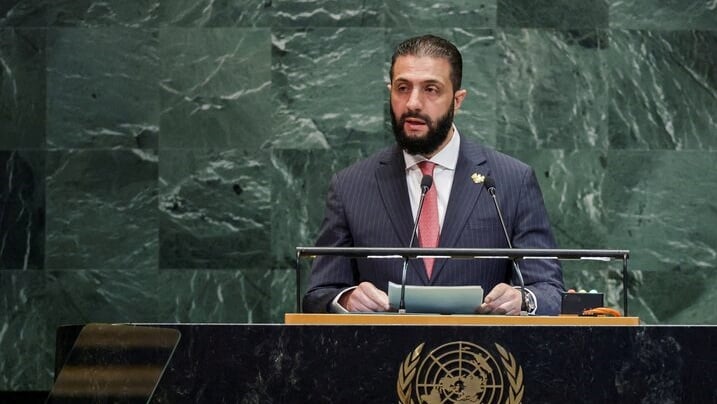
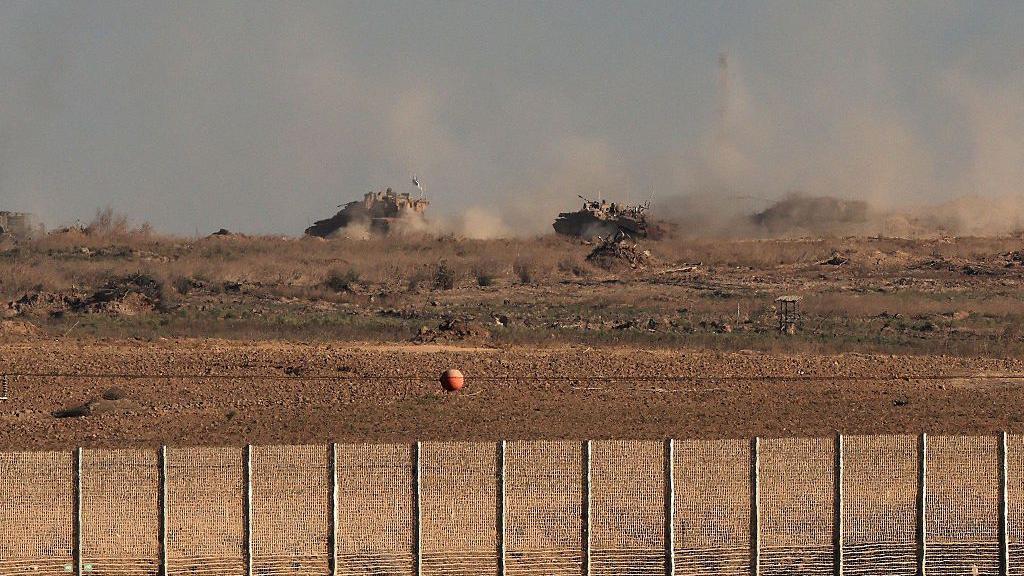





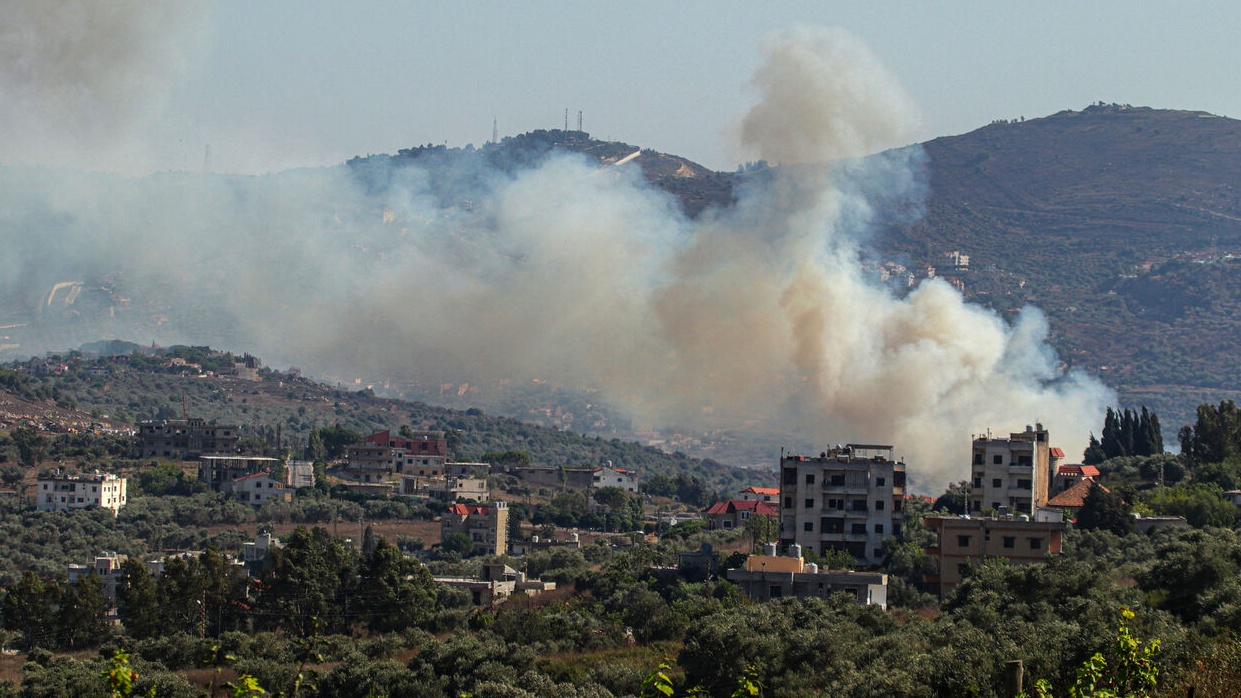
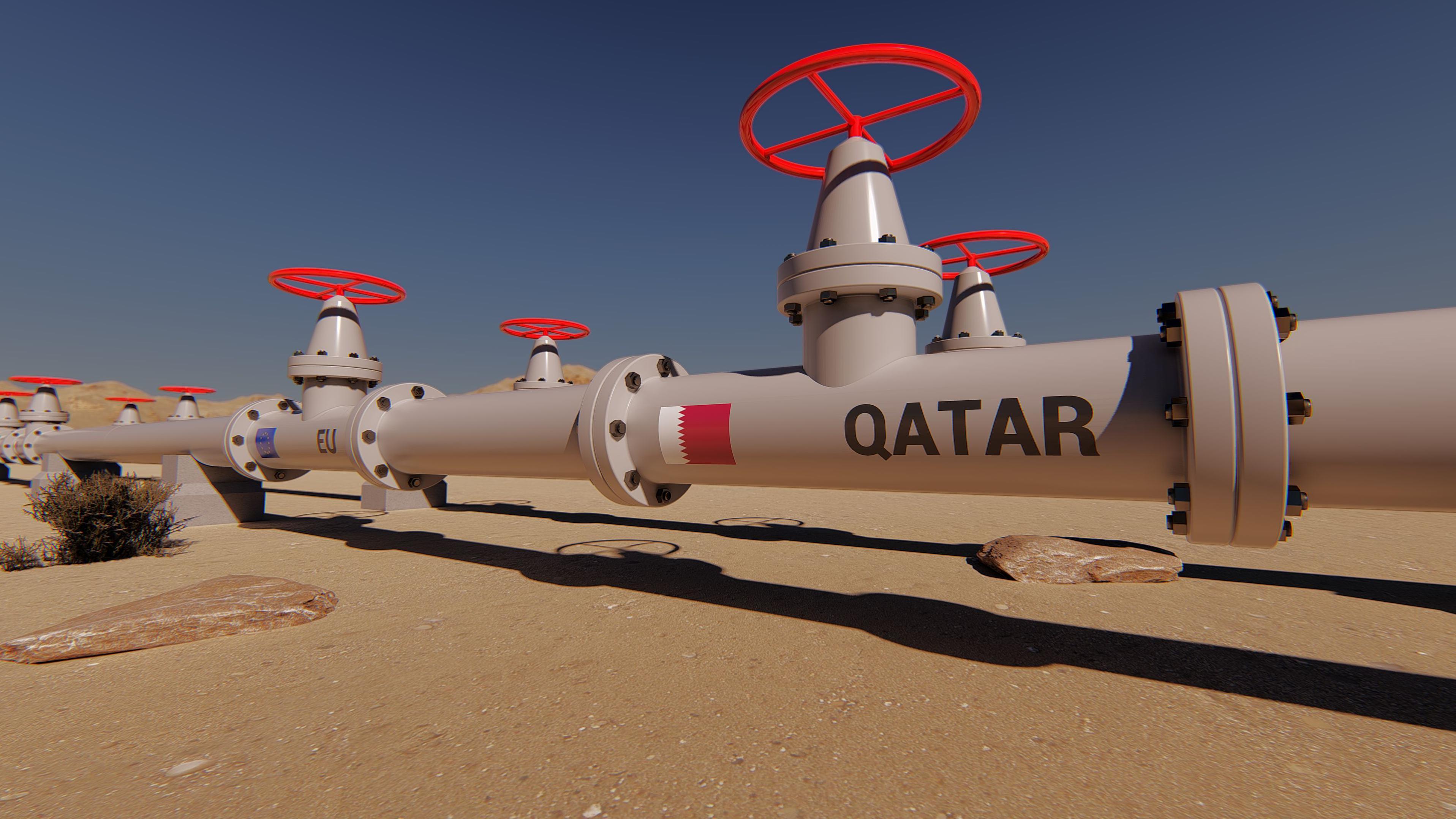


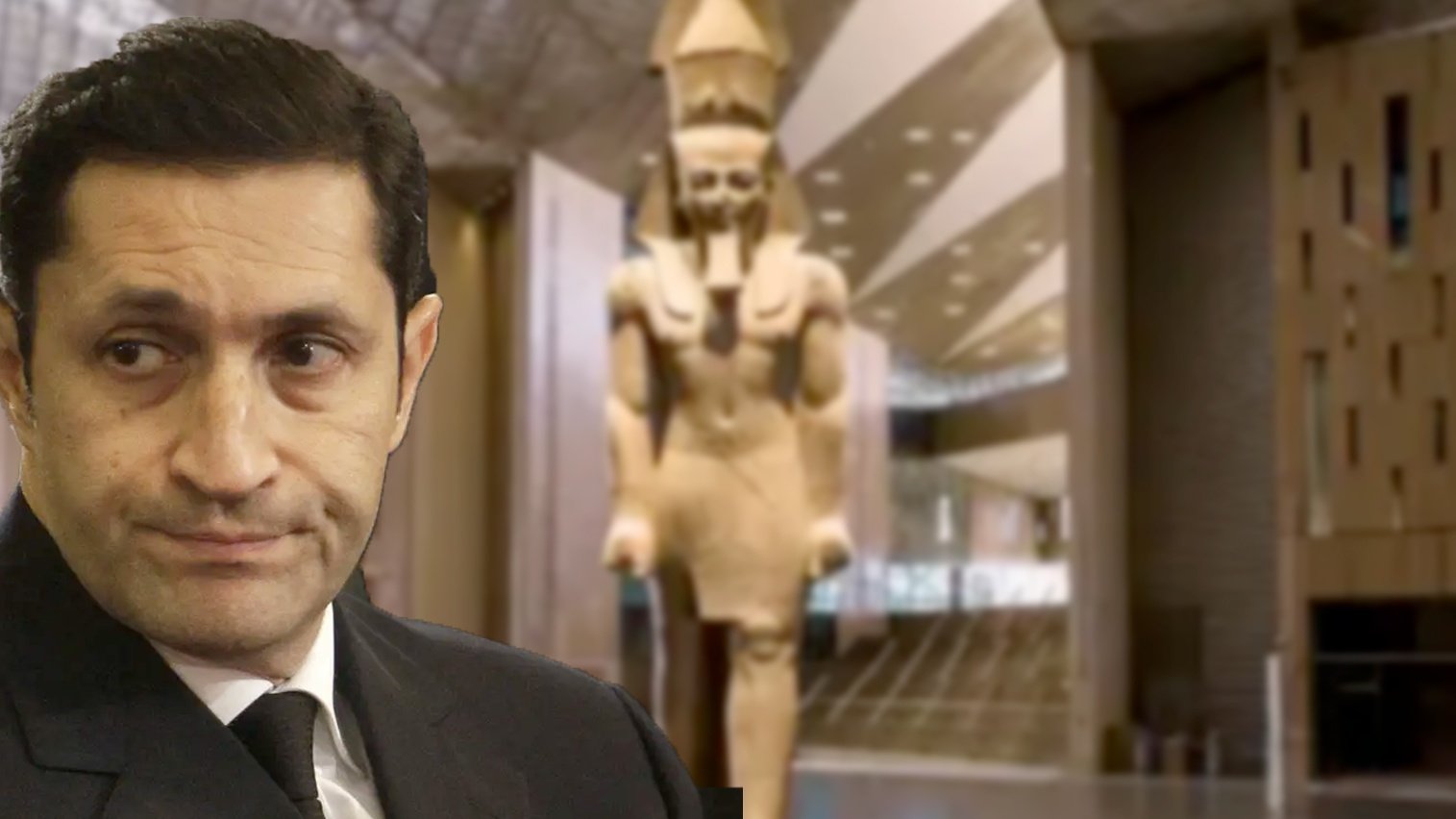





التعليقات (0)